Norbulingka (Standard Tibetan: ནོར་བུ་གླིང་ག; Wylie: Nor bu gling ga; simplified Chinese: 罗布林卡; traditional Chinese: 羅布林卡; literally "Jeweled Park") is a palace and surrounding park in Lhasa, Tibet, built from 1755. It served as the traditional summer residence of the successive Dalai Lamas from the 1780s up until the 14th Dalai Lama's exile in 1959. Part of the "Historic Ensemble of the Potala Palace", Norbulingka is recognized as a UNESCO World Heritage Site, and was added as an extension of this Historic Ensemble in 2001. It was built by the 7th Dalai Lama and served both as administrative centre and religious centre. It is a unique representation of Tibetan palace architecture.
Norbulingka Palace is situated in the west side of Lhasa, a short distance to the southwest of Potala Palace. Norbulingka covers an area of around 36 hectares (89 acres) and considered to be the largest ma...Read more
Norbulingka (Standard Tibetan: ནོར་བུ་གླིང་ག; Wylie: Nor bu gling ga; simplified Chinese: 罗布林卡; traditional Chinese: 羅布林卡; literally "Jeweled Park") is a palace and surrounding park in Lhasa, Tibet, built from 1755. It served as the traditional summer residence of the successive Dalai Lamas from the 1780s up until the 14th Dalai Lama's exile in 1959. Part of the "Historic Ensemble of the Potala Palace", Norbulingka is recognized as a UNESCO World Heritage Site, and was added as an extension of this Historic Ensemble in 2001. It was built by the 7th Dalai Lama and served both as administrative centre and religious centre. It is a unique representation of Tibetan palace architecture.
Norbulingka Palace is situated in the west side of Lhasa, a short distance to the southwest of Potala Palace. Norbulingka covers an area of around 36 hectares (89 acres) and considered to be the largest man-made garden in Tibet.
Norbulingka park is considered the premier park of all such horticultural parks in similar ethnic settings in Tibet. During the summer and autumn months, the parks in Tibet, including the Norbulingka, become hubs of entertainment with dancing, singing, music and festivities. The park is where the annual Sho Dun or 'Yoghurt Festival' is held.
The Norbulingka palace has been mostly identified with the 13th and the 14th Dalai Lamas who commissioned most of the structures that still stand today. During the invasion of Tibet in 1950, a number of buildings were damaged, but were rebuilt beginning in 2003, when the Chinese government initiated renovation works here to restore some of the damaged structures, and also the greenery, the flower gardens and the lakes.
 Monks in front of the throne of the Dalai Lamas, Norbulingka. 1938.
Monks in front of the throne of the Dalai Lamas, Norbulingka. 1938.Norbulingka Palace of the Dalai Lamas was built about 100 years after the Potala Palace was built on the Parkori peak, over a 36 hectares (89 acres) land area. It was built a little away to the west of the Potala for the exclusive use by the Dalai Lama to stay in during the summer months. Tenzin Gyatso, the present 14th Dalai Lama, stayed here before he fled to India.[1] The building of the palace and the park was undertaken by the 7th Dalai Lama from 1755. The Norbulingka Park and Summer Palace were completed in 1783 under Jampel Gyatso, the 8th Dalai Lama, on the outskirts of Lhasa.[2] and became the summer residence during the reign of the Eighth Dalai Lama.
The earliest history of Norbulingka is traced originally to a spring at this location, which was used during the summer months by the 7th Dalai Lama to cure his health problems. The Qing dynasty permitted the Dalai Lama to build a palace at this location for his stay, as a resting pavilion. Since subsequent Dalai Lamas also used to stay here for their studies (before enthronement) and as a summer resort, Norbulingka came to be known as the Summer Palace of the Dalai Lama.[3]
 The stables of the Dalai Lamas in Norbulingka, photographed in 1986
The stables of the Dalai Lamas in Norbulingka, photographed in 1986The 8th Dalai Lama was responsible for many additions to the Norbulingka complex in the form of palaces and gardens. However, it is sometimes reported that 6th through to 12th Dalai Lamas died young and under mysterious circumstances, conjectured as having been poisoned. Most of the credit for the expansion of Norbulingka is given to the 13th and the 14th Dalai Lamas.[4]
It was from the Norbulingka palace that the Dalai Lama escaped to India on 17 March 1959, under the strong belief that he would be captured by the Chinese. On this day, the Dalai Lama dressed like an ordinary Tibetan, and, carrying a rifle across his shoulder, left the Norbulinga palace and Tibet to seek asylum in India. As there was a dust storm blowing at that time, he was not recognized. According to Reuters, “The Dalai Lama and his officials, who had also escaped from the palace, rode out of the city on horses to join his family for the trek to India”. The Chinese discovered this "great escape" only two days later. The party journeyed through the Himalayas for two weeks, and finally crossed the Indian border where they received political asylum.[5] Norbulingka was later surrounded by protesters and subject to an attack by the Chinese.[5][6][7]
The summer residence of the Dalai Lama, located in the Norbulingka Park, is now a tourist attraction. The palace has a large collection of Italian chandeliers, Ajanta frescoes, Tibetan carpets, and many other artifacts. Murals of Buddha and the 5th Dalai Lama are seen in some rooms. The 14th Dalai Lama's (who fled from Tibet and took asylum in India) meditation room, bedroom, conference room and bathroom are part of the display and are explained to tourists.[8]
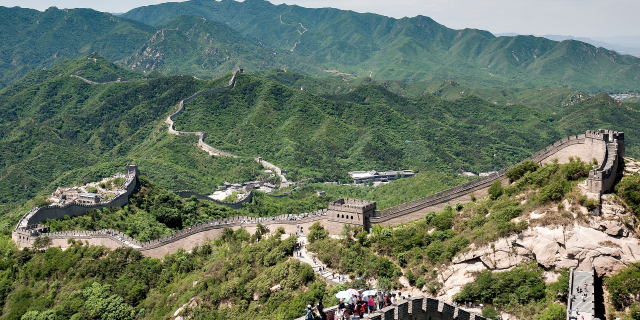






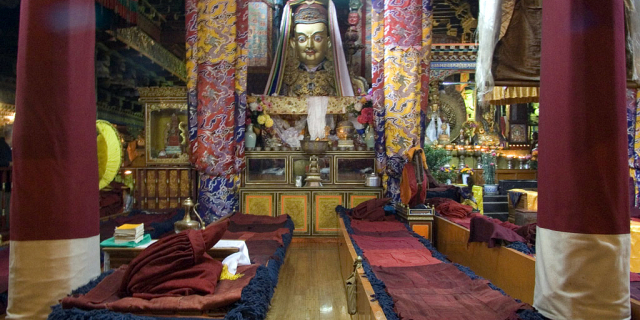

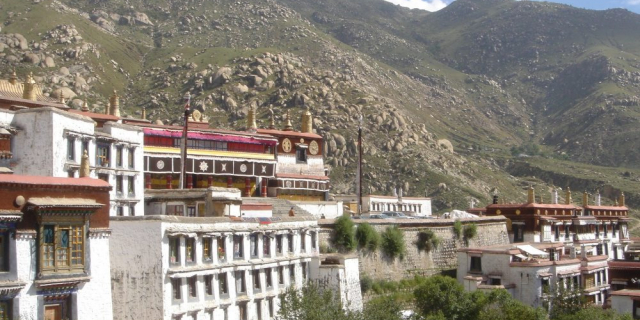











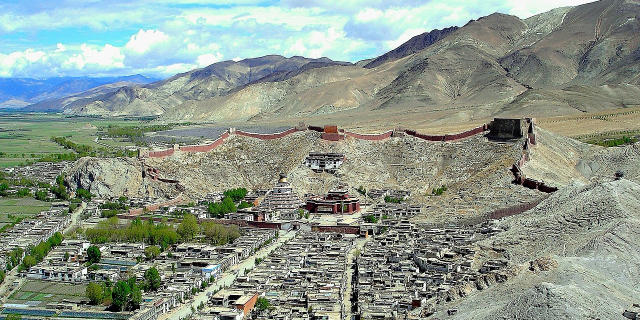
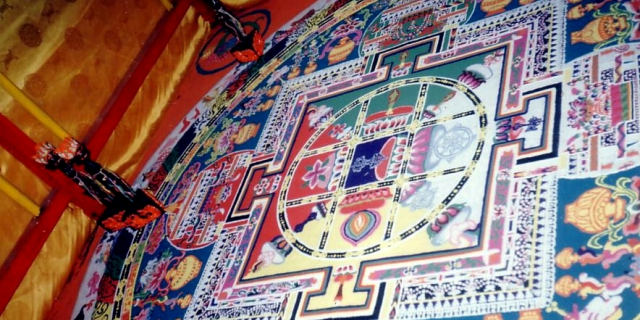
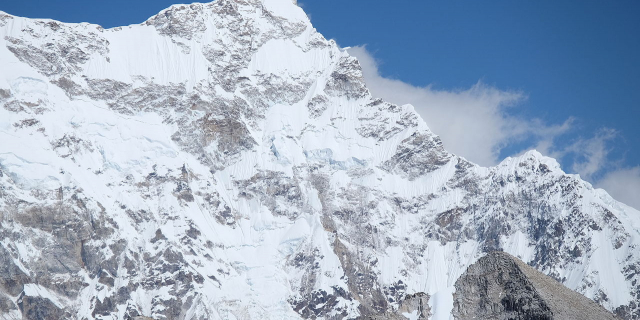





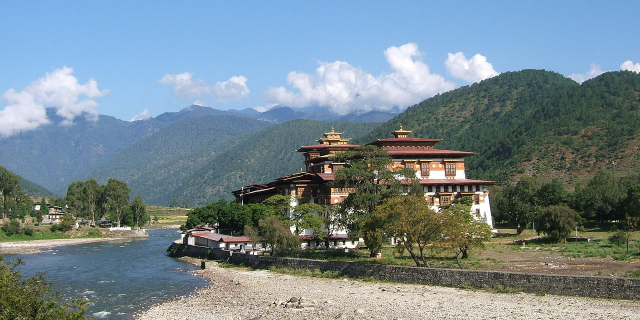


Add new comment